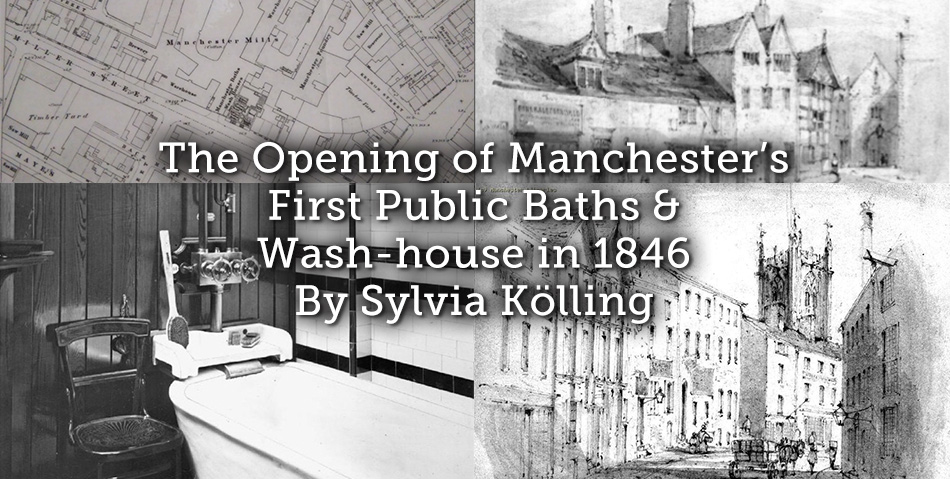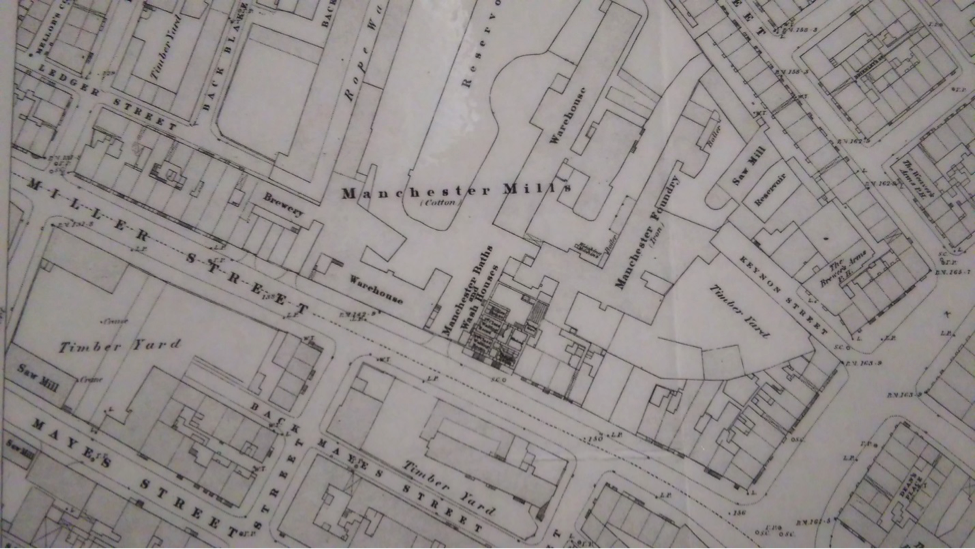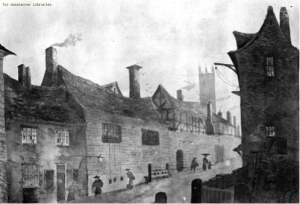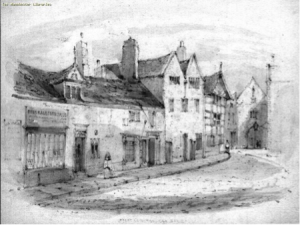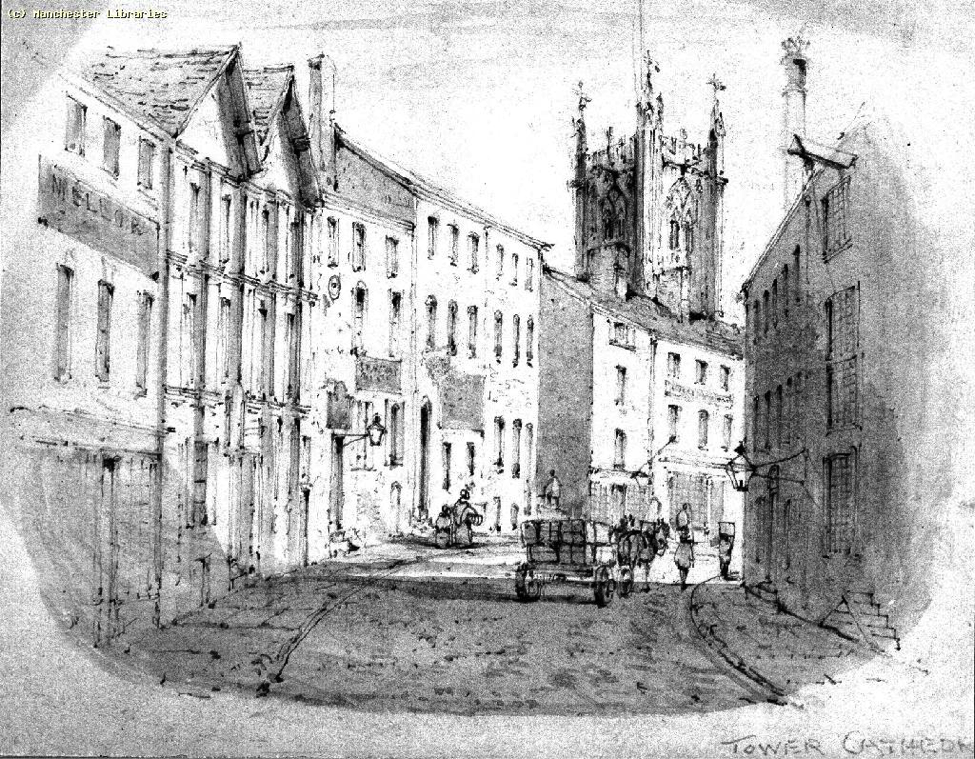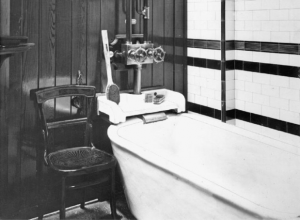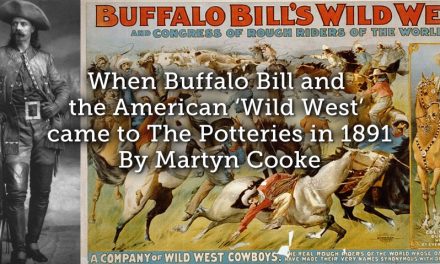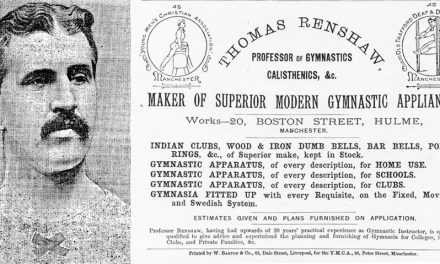Manchester’s first public baths and wash-house opened on Miller Street in New Cross on the 9th of September 1846. The recently founded “Public Baths and Wash-Houses in Manchester Committee” had raised money, gained significant public support, and political backing in order to accomplish this feat. This is the story of how this happened and it illustrates an important aspect of life in mid-19th century Manchester.
Industrial Revolution Manchester had only gained parliamentary representation in 1832, was battling with repeat outbreaks of infectious diseases such as cholera and typhus, and was a city changing faster than anyone could keep up with. The Corporation was struggling to build necessary infrastructure improvements, from paving and drainage to waste removal and provision of drinking water, and was tasked with new challenges administering and policing a rapidly changing population. As a result, many of the local infrastructure improvements were carried out by private investors rather than the municipal government. There were a multiplicity of motives for this, including religious feeling, moral outrage at the plight of the poor, and a desire to contain diseases that might spread to wealthy neighbourhoods.
- Map showing Miller St Baths
The starting point of Manchester’s baths and wash-houses movement can be traced back to a meeting of the Public Walks, Parks, and Playgrounds Committee on 19th of February 1845. There, a few men who had an interest in improving the living conditions of the poor talked about raising funds for building a baths and wash-house in Manchester. A committee was established. It included Alexander Kay, ET Bellhouse, Josiah Peel and many other important philanthropists of the time.
The day’s Manchester Guardian presents this editorial notice:
We believe that an appropriation of some portion of the fund [for walks, parks, and playgrounds] to the establishment of baths &c. would meet with the cordial approval of the subscribers; but, as a great deal has to be effected with the money, it would be better, we think, to originate some special movement for the creation of a separate fund. A fancy dress ball, on a grand scale, has been suggested as the means of raising a sum sufficient for the purpose (Manchester Guardian, 19/02/1845, p4).
- Views of Long Millgate
- Views of Long Millgate
A Fancy Dress Ball subcommittee was established which set out to attract high profile patrons including Prince Albert, Robert Peel, and Pudsey Dawson, and to organise the ball itself. The Free Trade Hall was booked for 29th of April 1845, and local artisans and musicians engaged to make it a beautiful occasion. Many of the artisans and traders involved gave their time and materials for free and so it came as a great disappointment when less than half the expected number of people attended: 1,200 instead of 3,000. This may have been because the ball was very late in the season.
Nevertheless, the committee managed to raise £650 by 22nd of May 1845, both through ball tickets and through subscriptions. These subscriptions ranged from £25 to 5s.
This was a considerable sum, but not enough to build a baths and wash-house from scratch. For reference, later (albeit larger) buildings needed £3,000 upwards to be established. Because they lacked funds, the committee set about finding suitable premises that could be converted, and located a 12-roomed building on Miller Street in September 1845 where works began immediately.
- Long Millgate
The baths were opened to the public on 9th of September 1846. There were 18 warm baths in total. These would later be called “slipper baths”, and are what most bathrooms have today. Six of these were upstairs and allocated for the use of women, while twelve were downstairs and allocated to be used by men. Apart from one for men with superior fittings for which 6d were charged, all baths cost 2d and included the use of a towel.
What actually happened when you took a bath in Miller Street is still unclear. There is debate about the actual logistics of bathing in these baths: one source claims that here was unlimited hot and cold water available; however, the water supply to the building was rather poor and that the cisterns weren’t big enough to meet the demand, at least in the first year. Later bathing establishments limited the time you were allowed to bathe as well as the water you would be able to do it in.
What is known is that the baths and wash-house was extremely popular, and constant improvements had to be made to keep up with demand. This first public baths and wash-house started a process in which Manchester residents would take responsibility for this very important aspect of public health until the Corporation was ready to take this on in the 1870s. Miller Street Baths was in operation until at least 1862, when it was acquired by the Manchester and Salford Baths and Laundries Company. It is unclear how long it was kept open for after that point but it was definitively closed by 1876.
- Leaf Street Bath
Article © Sylvia Kolling

